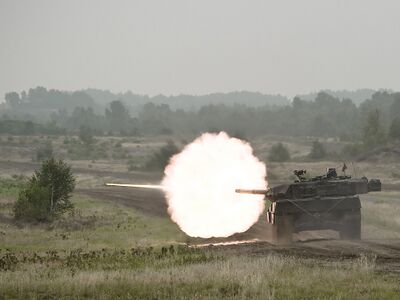Operation Homefront
Operation Homefront was the final strategtic offensive of the Zemplen War conducted by Ruvelka. Launched on 7 June and concluding on 14 July, Homefront's goal was to push all Syaran Commonality Armed Forces from Ruvelkan soil in one grand stroke behind the full weight of the Imperial Armed Forces of Ruvelka.
In the winter of 2009-2010 Chancellor Edviná Molnár began pushing the Imperial General Staff to plan out a major strategic offensive to drive Syara out of Ruvelka entirely. Ruvelka was able to mass another 400,000 troops, but the Imperial General Staff were reluctant to launch another massive operation in light of Ruvelkan difficulties and losses in previous attempts. Ruvelkan generals were fearful that an ill-timed offensive could squander Ruvelkan advantages in manpower and pave the way for follow Syaran counter-offensives after the Ruvelkans had been exhausted. Molnár insisted on going on the offensive however, pointing out that Ruvelkan intelligence had revealed Syara's increasing difficulties meeting the financial and manpower requirements of sustaining their war effort. Molnár also worried that with nearly a third of Ruvelkan territory under Syaran control, they were running out of strategic depth and risked Syaran forces drawing closer and closer to Ruvelka's industrial heartlands.
Molnár wished to launch the offensive, code named "Homefront", in March of 2010 but the Imperial General Staff convinced her to wait until late Spring as the Syarans were expected to launch a number of smaller operations after the end of winter. The Ruvelkans were aided by increasing Syaran intolerance of heavy casualties, which limited the number and scope of Syaran offensives to mostly small scale efforts against isolated sectors of the front. Although Syaran intelligence had detected the buildup the SCAF was uncertain where or when it would be launched, and furthermore was increasingly short of reserves to reinforce their lives.
Homefront began on 7 June with widespread infiltration by Ruvelkan Fusiliers followed by a broad stroke offensive aimed at overwhelming virtually all sectors of the front. Intense fighting ravaged both sides, but by 14 June Syaran lines began to buckle under the weight of the Ruvelkan offensive. On 16 June Syaran Central Command ordered a general retreat as Syaran forces began to collapse. By July, Ruvelka had pushed back to the original borders and began recapturing the disputed territories that had been the origin of the conflict in the first place. On 14 July, both sides agreed to a ceasefire and negotiations to resolve the conflict, bringing Operation Homefront to an end. The war ended five days later on 19 July.
